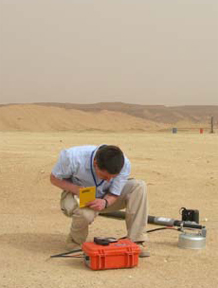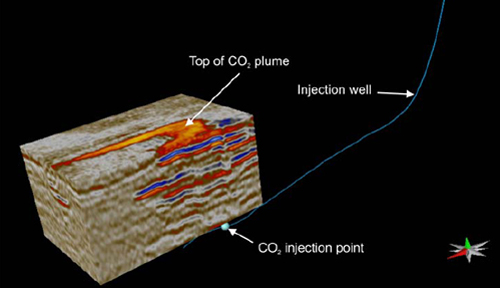Why monitor CO2 storage projects?

CO2 storage regulations will require that storage operations are rigorously monitored for a number of reasons, including:
- verifying the amount and composition of CO2 being put into underground storage
- understanding how the CO2 is behaving once underground
- providing early warning if things are not going as planned
- providing assurance of long–term storage integrity
- measuring any leakage that might occur
Pre–injection monitoring of a CO2 storage site project will start before the CO2 storage begins. This is required to build up a baseline picture of the geology and the environmental conditions before any CO2 is stored.
A strategy for baseline surveying will be built into the overall assessment of storage site suitability, referred to as the ‘site characterisation’. When injection has started, monitoring surveys will be repeated at specified time intervals to build up ‘time–lapse’ images of site properties.
Results and measurements from the time–lapse monitoring surveys can then be compared to the baseline survey to build up a picture of how things are changing through time. The storage site will need to be monitored throughout the injection phase and for some time after injection has ceased (post injection monitoring) to ensure that the system is behaving as predicted and is likely to continue to do so in the future.
How is CO2 monitored?
A broad range of tools and technologies is available to monitor CO2 storage sites at a range of locations both onshore and offshore. Monitoring systems can be categorised into deep-focussed and shallow-focussed.
Deep-focussed monitoring can be run from the surface (e.g. surface seismic or gravimetry) or from wellbores (e.g. well logging, pressure/temperature measurement) and is aimed at identifying and characterising changes that occur within the storage reservoir as injection proceeds, including the movement of CO2 within the storage reservoir and its immediate surroundings. Deep monitoring systems will also give early warning should CO2 migrate to shallower depths.
Shallow monitoring systems are designed to detect and measure CO2 that has migrated into shallow geological formations, to the soil or seabed, or leaked to the atmosphere or into seawater. Shallow focussed methods can be airborne (e.g satellite interferometry), deployed at the surface (e.g atmospheric measurements and surface flux), or can be run from shallow wellbores (e.g. geochemical sampling).
BGS undertakes research into the evaluation, testing and development of many different types of monitoring tool and their application and deployment into integrated monitoring systems. We have designed an online monitoring system selection tool for the IEAGHG Programme to assist storage operators select appropriate technologies for their sites.
Monitoring Selection Tool
The Monitoring Selection Tool describes the range of tools available, their strengths and weaknesses and indicative costs, and provides examples from a number of real CO2 injection case–studies where monitoring tools have been used successfully.








